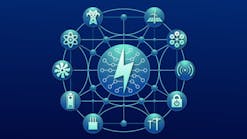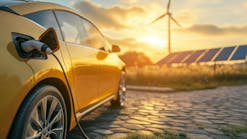Navigating the Challenges and Growth of Electric Vehicles in a Changing Market
When we took my oldest son to the used car lot to help him buy his first car three years ago, we were looking for a basic, safe sedan that he could drive to his community college each weekday and work on the weekends. We had no idea we would be driving away in a used plug-in hybrid EV. I have covered the energy industry for many years and had read and written about electrification and its impact on the utility industry but hadn’t really considered buying an EV.
I loved how quiet and smooth the car drove, and how after just plugging into our garage outlet each evening, he would rarely use gas in his daily 50-mile round trip commute to the school he had chosen. We felt good about contributing to saving the Earth and even better about saving money on gas.
But after about a year and a half, the battery stopped charging and the actual range in EV mode was less than 10 miles. Sure, he still got better gas mileage than in internal combustion vehicle with the hybrid functionality, but it seemed the beneficial effect on the environment and his budget lessened quite a bit.
We researched possibly replacing the battery, but for a poor college student, it’s cost-prohibitive at this point. Granted, any engine could need major work at any time in its life, especially at nine years, but $3,000 to $5,000 to replace this car’s battery is a bit much to spend on something that doesn’t require it to run.
Regardless of my personal story, EV sales are continuing to rise, albeit not as rapidly as some once predicted. In 2023, EVs and plug-in hybrids surpassed 16% of the total light-duty vehicle sales in the U.S., according to the Energy Information Administration. Just a couple of years ago, analysts were predicting monumental growth in EVs in the U.S., but the recent interest rates and inflation have cooled the consumer interest somewhat.
In January, PBS Newshour did a segment on why major car manufacturers are slowing production of electric vehicles. PBS interviewed automotive journalist Jessica Caldwell from Edmunds.com, who explained that EVs are still more expensive, with interest rates being high. She also said that people are getting skeptical about infrastructure, as the charging networks aren’t quite built out yet so “you many do not think it’s as easy to own an EV as maybe you had thought.”
Hertz announced earlier this year that it was going to sell about a third of its global EV fleet and use some of the proceeds to buy gas-powered cars. Anti-EV social media personalities rejoiced. Hertz indicated that high repair costs were one reason for the move. I can relate. And the lack of chargers or uncertainty of the charging network just doesn’t work quite yet for rental EV model.
Despite all these bumps in the road, EV sales are still on an upward trajectory. They are still growing, just not as fast as we thought, according to Caldwell. Government incentives are trying to help spur U.S. EV growth; even as consumers will decide. Electric utilities are watching the market trends and prediction for EVs, even as they react to the demand from EVs as it comes up in their territories, whether now or later.
EV proliferation will just be part of the exploding demand, as we have come to observe in the past year. I have just been discussing consumer EV sales. Fleet electrification is something utilities have been actively working to address, as this has been more of a factor in satisfying demand. And I can’t regret to mention data center growth creating a surge in power demand rather quickly. According to one research company, Rystad Energy, the build-out of data centers and more widespread adoption of EVs is expected to ramp up electricity demand in the U.S., add 290 TWh of new demand by 2030.
So, we know the answers to all of this: investment, infrastructure, and technology. Many utilities already have initiatives focused on managing or learning from today’s EV charging. In this month’s issue, we feature Cleco Power, which plans to install 30 Level 2 EV charging stations in Louisiana. The utility’s research shows that expanding public Level 2 and DC Fast charging access will be a driving force for the growth of EVs in Louisiana.
Tdworld.com features many stories of utilities educating consumers regarding when and where to charge and offering incentives to install charging infrastructure. Utilities are collaborating with charging companies, vehicle manufacturers and fleets, not only in research but in sharing data for capacity maps and projected charging demand. Engineers are offering their help in planning and mitigation. One of my favorite stories we have published is one titled “Right-Sizing Residential Transformers for EVs,” by Jodie Lupton from POWER Engineers (January 2024).
As usual the electric utility industry is coming together to anticipate and come up with solutions to a problem, and even drive us into a future of cleaner air and better weather.



